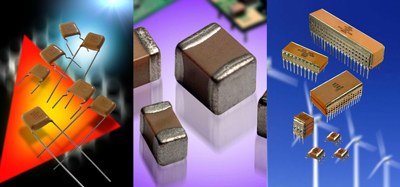 COMSOL, Inc. has announced the latest release of the COMSOL Multiphysics and COMSOL Server simulation software. Version 5.3 provides simulation specialists with notable performance improvements and powerful app design and deployment capabilities with new modeling and development tools, solvers, and user-driven features. In many cases, users will experience a speedup of ten times or more in software responsiveness, such as in preprocessing tasks for handling models with several thousand boundaries and domains.
COMSOL, Inc. has announced the latest release of the COMSOL Multiphysics and COMSOL Server simulation software. Version 5.3 provides simulation specialists with notable performance improvements and powerful app design and deployment capabilities with new modeling and development tools, solvers, and user-driven features. In many cases, users will experience a speedup of ten times or more in software responsiveness, such as in preprocessing tasks for handling models with several thousand boundaries and domains.
Numerical simulation of the electrochemical potential distribution along an oil rig in sea water using the Boundary Element method.
“Version 5.3 is a result of our continued focus on delivering highly capable mathematical modeling tools. Our users will find great value in new solvers, the new physics interfaces, and the many enhancements throughout COMSOL software, from model creation to deployment of apps”, comments Svante Littmarck, President and CEO, COMSOL, Inc.
With version 5.3 the boundary element method (BEM) is available for modeling electrostatics and corrosion effects. “This means that users can easily combine boundary element and finite element methods for greater flexibility in their multiphysics simulations”, continues Littmarck. The Boundary Element method enables users to simulate models with infinite domains and voids, as well as to quickly set up simulations that combine wires, beams, surfaces, and solids in the same model. Typical uses for this functionality include the modeling of electrical cathodic protection, cables or capacitive sensors.
The algebraic multigrid (AMG) solver allows for solving large fluid flow problems with a single mesh level. The simulation process is more robust for problems such as fluid-structure interaction in a solar panel.
Users handling large CFD models will benefit from the new algebraic multigrid (AMG) solver implemented in version 5.3. The AMG solver requires only a single mesh level and is now the default option for many fluid flow and transport phenomena interfaces. Users modeling turbulent flows can benefit from more robust computations with the automatic treatment of walls. This feature blends high-fidelity low-Reynolds formulation with wall functions.
The Model Builder now more rapidly handles geometry and mesh operations for models with large arrays and complicated solid operations in 3D. Users working with models and geometry requiring the use of several element types will benefit from the automatic generation of pyramidal elements to handle the transition between swept, hexahedral, prismatic, and tetrahedral meshes. A new option for automatic geometry defeaturing through virtual geometry operations is now available to users. “We continue to see improved performance for large models across the board. This is not only about solution time but also how the software handles large models in the user interface, including geometry and mesh,”said Bjorn Sjodin, VP of Product Management, COMSOL, Inc.
With the introduction of model methods in version 5.3, it is easy to automate repetitive operations directly in the Model Builder. ”You can now simply record a set of operations, like a macro, and use the resulting method while setting up or solving a model. This is an important usability feature with many possible applications. For example, you can create a reusable model method that generates a complicated array of geometric objects to expand on the standard functionality of the Model Builder,” continues Sjodin.
The algebraic multigrid (AMG) solver allows for solving large fluid flow problems with a single mesh level. The simulation process is more robust for problems such as fluid-structure interaction in a solar panel.
The Application Libraries feature more than 50 new and updated tutorial models, allowing users to quickly adopt new features, tools, and modeling techniques. The tutorials span several areas, from permanent magnet motors, cables, and horn antennas, to supersonic flows, electronics cooling, and vibration and noise in a gearbox.
The Application Builder allows simulation specialists to create apps based on their multiphysics models. The app interface can be easily customized and accessed via a browser or a Windows client, which connects to a local installation of COMSOL Server. Updates to COMSOL Server include comprehensive log files for user activity as well as a centralized cluster administration setting in the COMSOL Server web interface for easy setup of running apps on clusters. In the Application Builder, app designers can now define customized actions when clicking on plots in graphics objects, enabling the easy creation of interactive apps.


